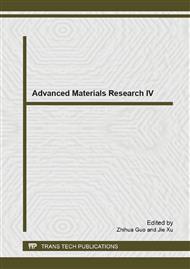p.134
p.138
p.143
p.149
p.154
p.158
p.163
p.167
p.172
Wettability of Plasma-Treated Fibers of Anahaw (Livistona rotundifolia), Buri (Corypha elata) and Pandan (Pandanus amaryllifolius)
Abstract:
Anahaw (Livistona rotundifolia), Buri (Corypha elata) and Pandan (Pandanus amaryllifolius) leaves were plasma-treated using argon, oxygen and carbon tetrafluoride (CF4) gas under varying discharge currents (5 mA, 10 mA, 20 mA and 30 mA) for 15 minutes. The wettability properties of the plasma-treated samples were investigated using the sessile drop method to determine static contact angles on the surfaces. Based on the results, it was observed that increasing the discharge current in argon and oxygen plasma treatment was found to increase the wettability of the three samples while it decreased the wettability of Pandan and Buri samples for carbon tetrafluoride plasma.
Info:
Periodical:
Pages:
154-157
Citation:
Online since:
February 2014
Price:
Сopyright:
© 2014 Trans Tech Publications Ltd. All Rights Reserved
Share:
Citation:


